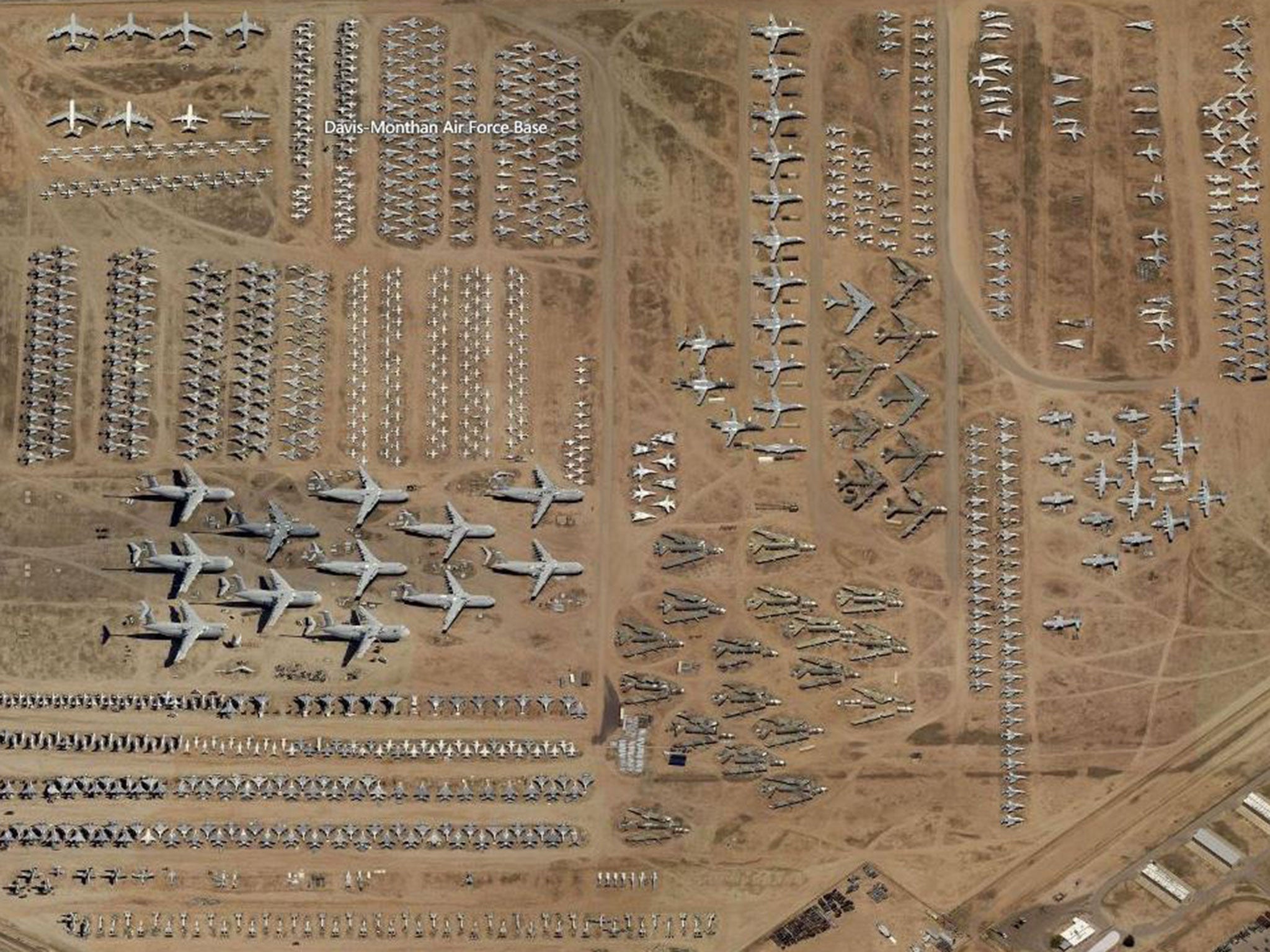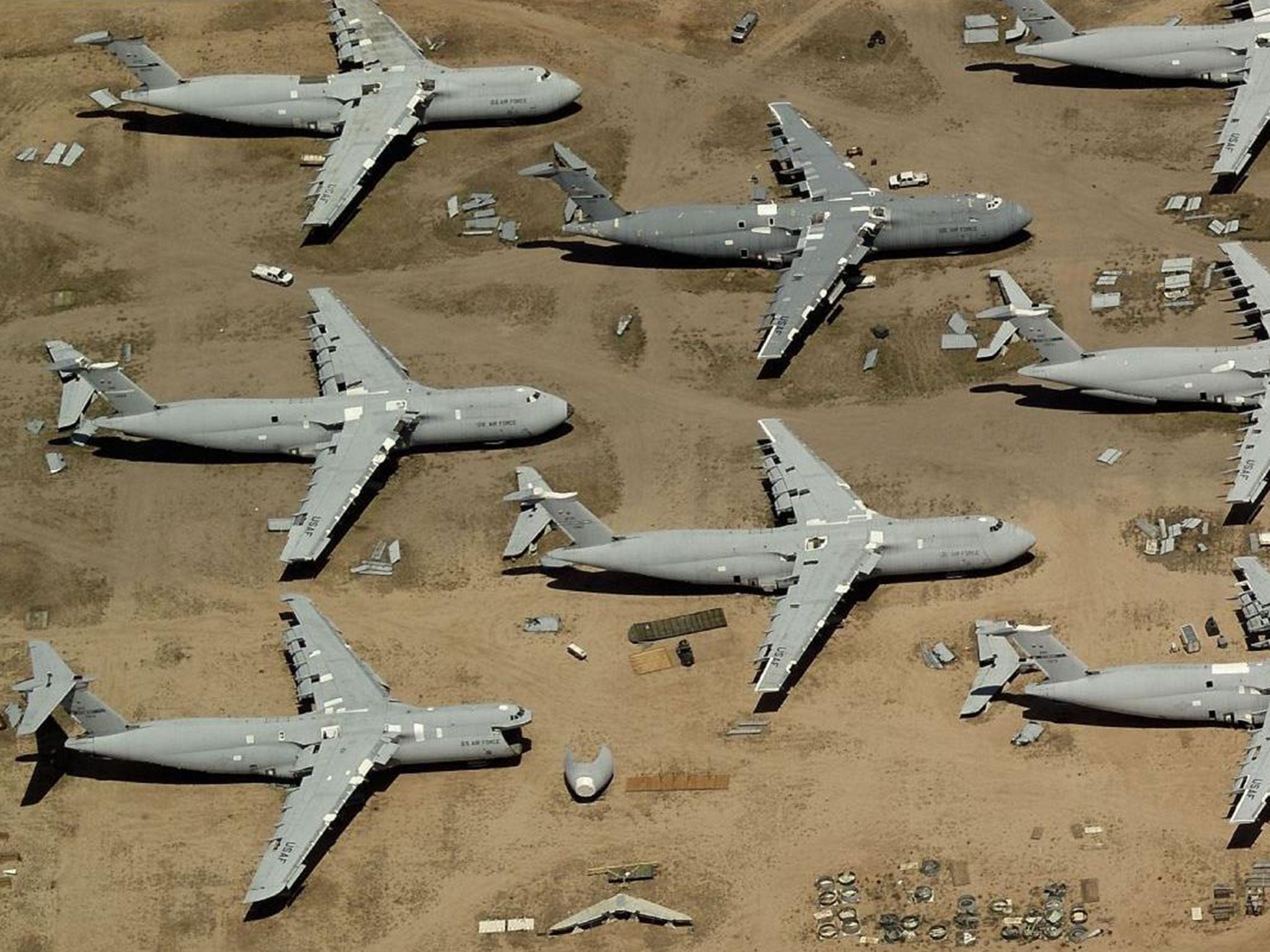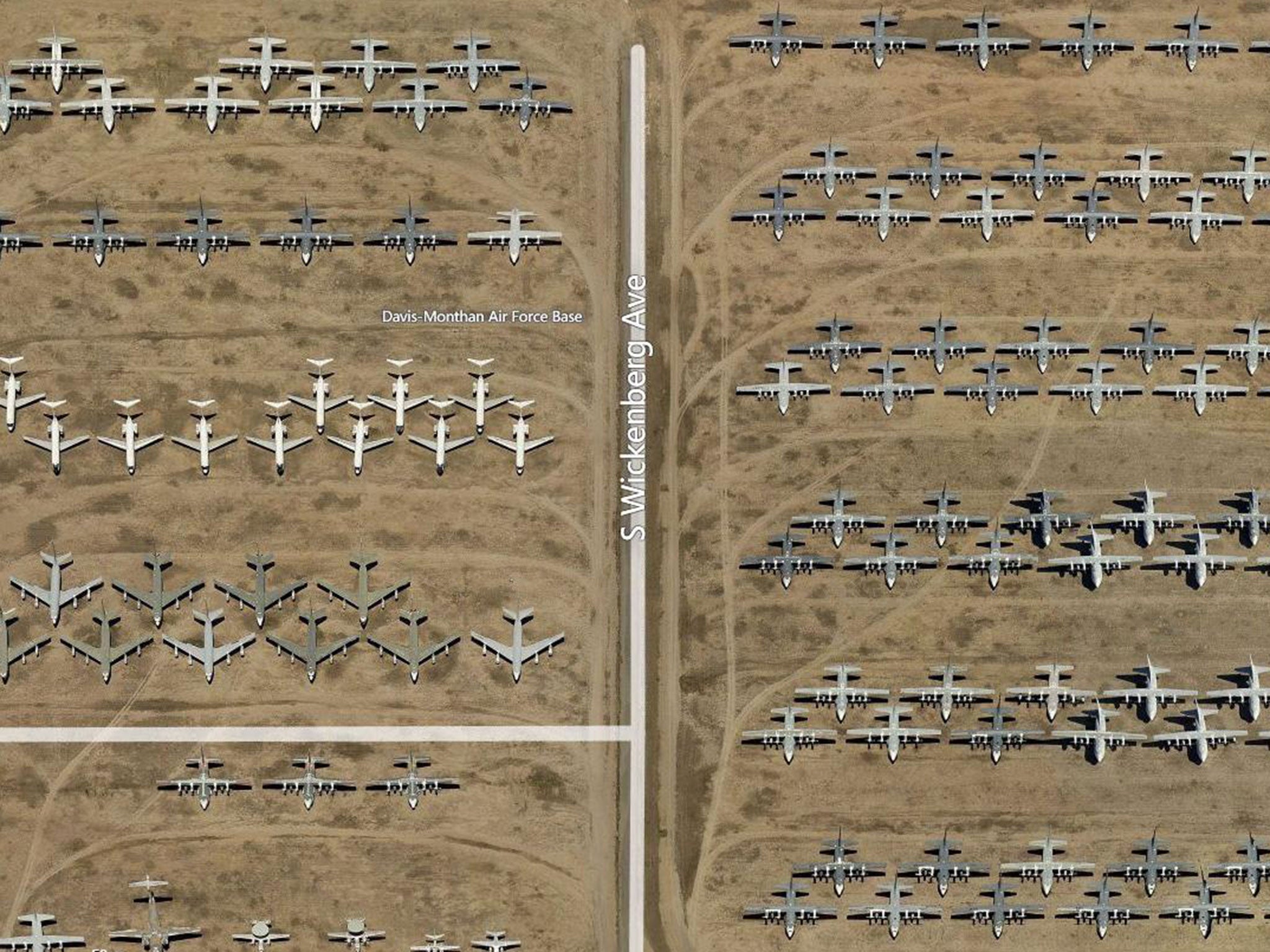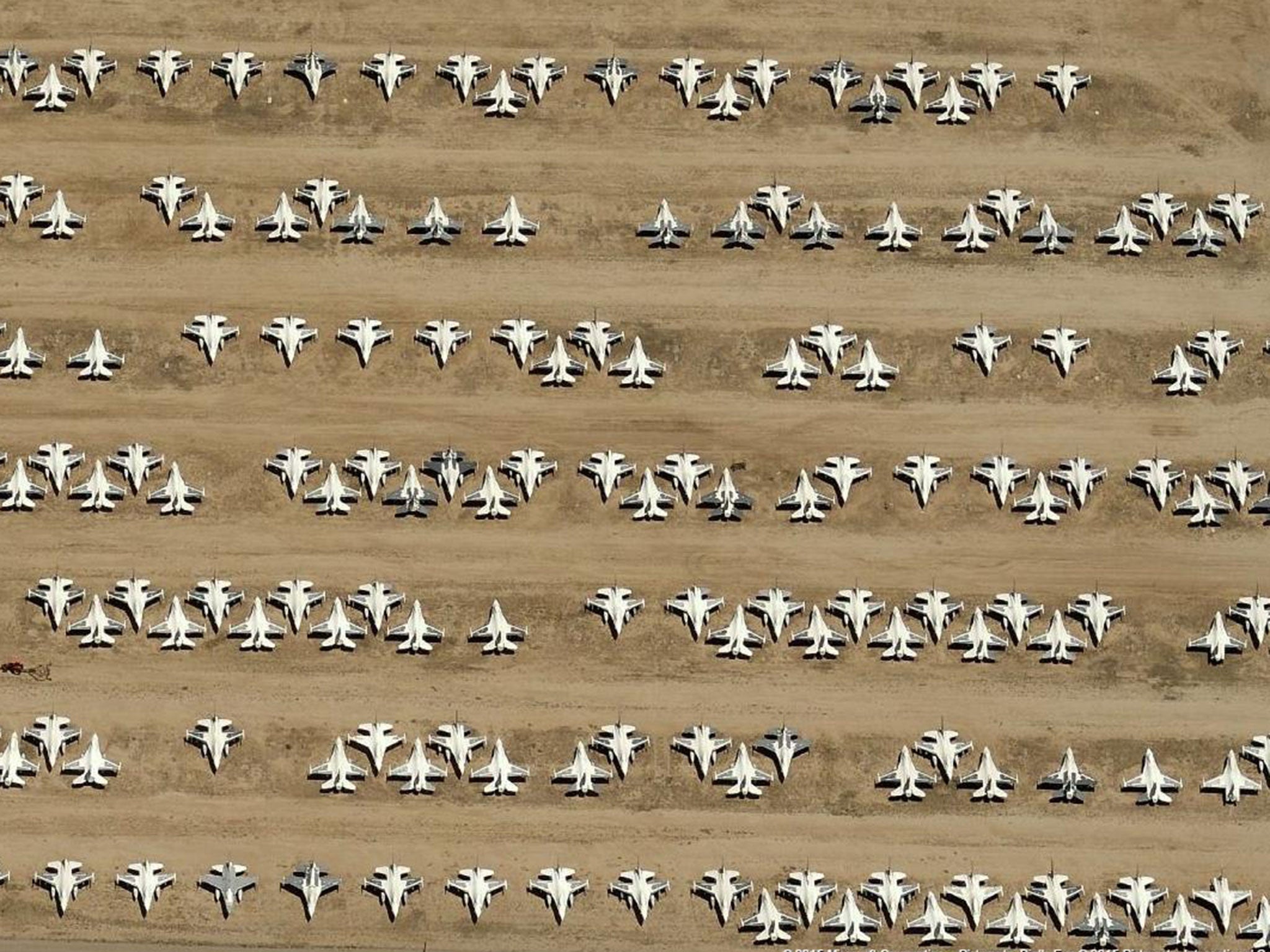World's largest plane graveyard of US military fighters in desert can now be explored online in amazing interactive map
An interactive map reveals 4,400 aircraft at the Davis-Monthan Air Force Base

Your support helps us to tell the story
From reproductive rights to climate change to Big Tech, The Independent is on the ground when the story is developing. Whether it's investigating the financials of Elon Musk's pro-Trump PAC or producing our latest documentary, 'The A Word', which shines a light on the American women fighting for reproductive rights, we know how important it is to parse out the facts from the messaging.
At such a critical moment in US history, we need reporters on the ground. Your donation allows us to keep sending journalists to speak to both sides of the story.
The Independent is trusted by Americans across the entire political spectrum. And unlike many other quality news outlets, we choose not to lock Americans out of our reporting and analysis with paywalls. We believe quality journalism should be available to everyone, paid for by those who can afford it.
Your support makes all the difference.The largest “plane graveyard” in the world where more than 4,400 aircraft are collecting dust in the Arizona desert can now be explored in intricate detail.
A high definition interactive map produced by Bing shows the US military planes of all shapes and sizes lined up in meticulous rows on the reddish earth.
Zooming in in "bird's eye" mode shows them in three-dimensional detail, with decommissioned fighters coated in protective sheeting and covered in white to protect them from the baking sun.
This is the Davis-Monthan Air Force Base, commonly known as The Boneyard, where the 309th Aerospace Maintenance and Regeneration Group (AMARG) takes care of disused warplanes and fighter jets.
It is home to everything from enormous cargo planes to bombers, Hercules freighters, A10 Thunderbolts and the F-14 Tomcat fighters made famous in Top Gun.
“As long as there are aircraft flying, military and commercial aircraft boneyards will always be necessary to keep other planes in the air,” aviation author Nick Veronico, who has visited Davis-Monthan told the BBC.

“Each of the storage yards typically performs a variety of functions from storing aircraft that are temporarily out of service but expected to return to the fleet, to reclaiming useable parts which are inspected, overhauled, and then held until needed by active aircraft, to dismantling of the aircraft carcasses.”
Many of the planes date back to the Cold War or Vietnam, including retired B-52 bombers capable of carrying nuclear weapons.
They were stored with their wings removed and placed on the ground to prove to Soviet satellites they had been taken out of service.
The first retired B-52 was brought back to life in The Boneyard earlier this month, taking off after upgrades to return to duty.

The 53-year-old Stratofortress was nicknamed the “Ghost Rider” and had been in storage at the desert since 2008, CNN reported.
AMARG arranges its aircraft over almost 2,600 acres (10.5 sq km) of desert in the city of Tucson, surrounded by houses and criss-crossed by roads.
Some of the planes have noses or wings missing, surrounded by removed parts being salvaged by workers to be sent out to air bases across the world as spares.
Others are wrapped up almost ready to go, being kept as close to working order as possible in case they are needed in a new mission.

When they arrive, they must be washed, their fuel tanks drained and cleaned, ammunition and ejector seats removed and ducts sealed before they are covered back up.
AMARG was established at Davis-Monthan to store planes in 1946 after the end of the Second World War, chosen for Tucson’s low humidity, infrequent rainfall, high altitude and hard alkaline soil.
It has been the atmospheric backdrop for several films, television series and music videos, most recently Transformers: Revenge of the Fallen.
Join our commenting forum
Join thought-provoking conversations, follow other Independent readers and see their replies
Comments